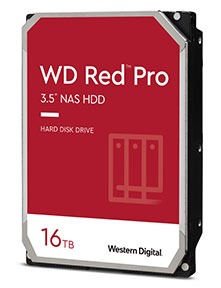
By Khwaja Saifuddin, Senior Sales Director, Middle East at Western Digital
The way we work and learn changed significantly in 2020 and it’s still evolving. In a flash, remote work has become the new norm.
This massive shift means productivity and efficiency are changing everywhere and for everyone. However, working from home does not take away the requirements for data and files to be efficiently managed and for workers to stay productive – from work documents to family photos to music and movie archives and more. Doing so goes beyond simply storing data, to backing up data. One of the main ways to accomplish this goal is with network-attached storage (NAS). In a NAS system, data is centrally stored on a handful of bays, typically filled with hard disk drives (HDDs) or solid-state drives (SSDs).
Creating a robust NAS infrastructure is a necessity for backup, data protection, remote access and digital collaboration. There is now a spotlight on the need for storage solutions that offer high capacity, throughput, and reliability. The increase in storage capacity also means that some users can take advantage of NAS systems with fewer bays, while others won’t have to upgrade to a higher-bay system when they run out of space.
Western Digital has designed and tested certain HDDs for NAS environments, keeping the productivity requirements of content creators and businesses at the core.
Since the range of use cases for NAS has become increasingly diverse, we are now making it easier for users to match the right drive with their applications and workloads – from moderate small office/home office (SOHO) workloads to intensive small- and medium-business (SMB) use, as well as more demanding environments.
Demands to store, share, and access personal data are increasing. As a result, NAS devices are tasked with balancing scalable performance and affordable cost. Now, NAS applications for small office and home office (SOHO) can get a huge performance boost from SATA SSDs that are robust enough for most users, yet significantly faster than any HDD. Our WD Red™ SA500 is one example.

From our experience, many SOHO users rely on their systems for office file sharing, home backup or content archiving. Throughput and capacity are key considerations in these types of SOHO environments and WD Red Plus drives are built and tested for SOHO NAS systems. These drives give you the flexibility, versatility, and confidence in storing and sharing your personal home and work files.
WD Red Pro drives, including the latest 16TB and 18TB capacities, are designed specifically with medium to large-scale business customers in mind and are available for up to 24-bay NAS systems. Engineered with CMR recording technology at 7200RPM to handle high-intensity workloads in 24×7 environments, WD Red Pro drives are ideal for archiving and sharing, as well as RAID array rebuilding on extended operating systems such as ZFS or other file systems. These drives add value by enabling employees to quickly sync and share their files, including backup folders, reliably in their NAS solution, thereby increasing productivity and efficiency.
WD Red Pro drives with NASware technology take the guesswork out of selecting a drive. Optimized for NAS systems, the unique algorithm balances performance and reliability in NAS and RAID environments. Simply put, a WD Red Pro drive is one of the most compatible drives available for NAS enclosures.
WD Red Pro drives are equipped with a multi-axis shock sensor that automatically detects subtle shock events and dynamic fly height technology, which adjusts each read-write function to compensate and protect the data. This combination of technology further protects the drives in larger 24-bay NAS environments and helps increase hard drive reliability. Built specifically for RAID and NAS environments, WD Red™ Pro drives come equipped with error recovery controls as part of NASware™ 3.0 technology to help reduce drive fallout in RAID applications.
We are committed to addressing the evolving needs of our customers and to offering the right technology for each implementation. This philosophy launched WD Red drives years ago, and they have been a leader in their field ever since. We continue engaging customers and partners and analyzing real-world data to offer a family of WD Red NAS drives – from HDDs to SSDs – that serve a variety of workloads and applications.